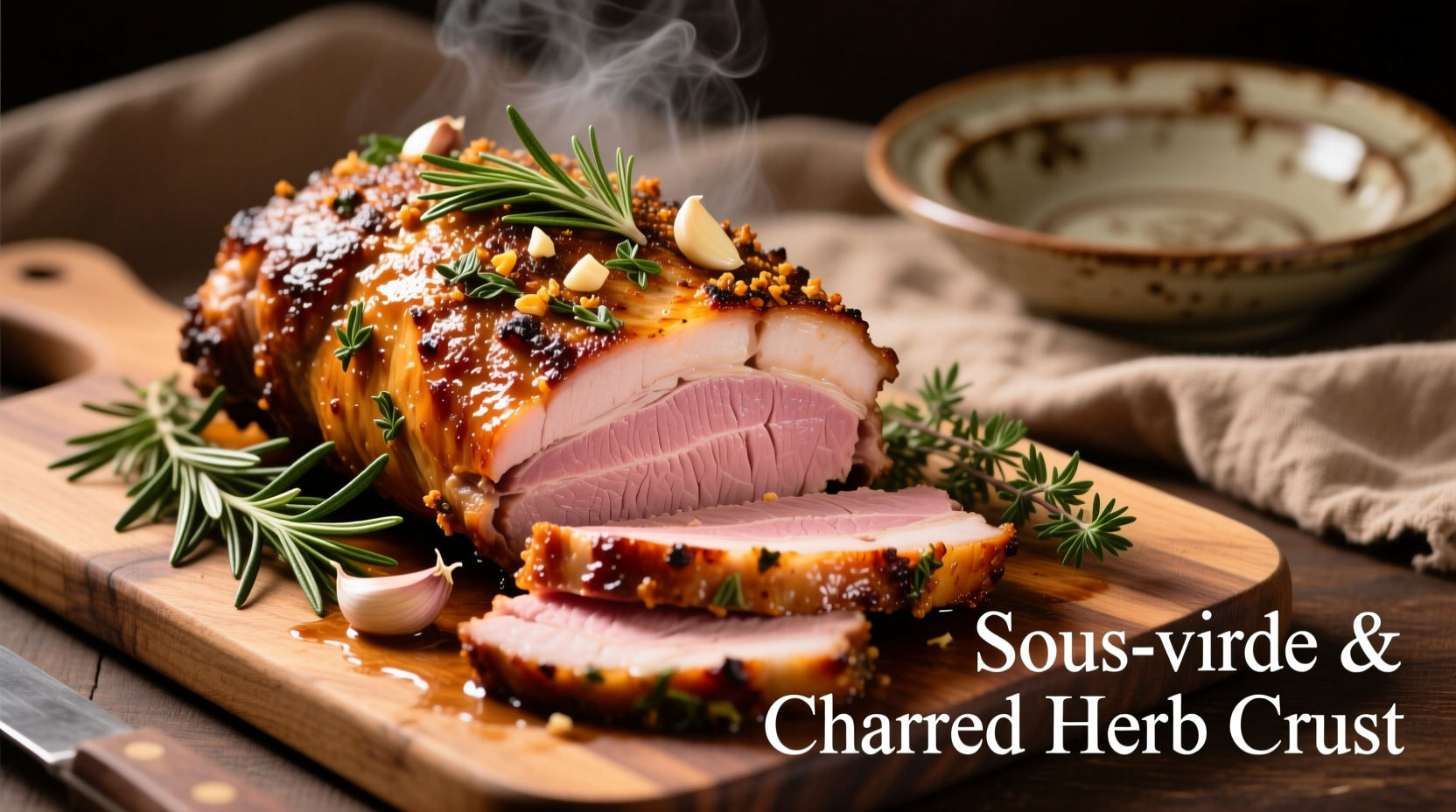Mastering the Perfect Pork Roast: A Step-by-Step Guide
Cooking a succulent pork roast seems intimidating, but with the right technique, you can create restaurant-quality results in your home kitchen. This comprehensive guide breaks down the entire process into manageable steps, ensuring juicy, flavorful pork every time you fire up your oven.
What You'll Need Before You Start
Selecting the right cut and having proper equipment makes all the difference in your pork roast outcome. Here's what to gather before beginning:
| Pork Cut | Best Cooking Method | Recommended Internal Temp | Rest Time |
|---|---|---|---|
| Pork Loin (center cut) | Oven roast | 145°F (63°C) | 15 minutes |
| Pork Shoulder (Boston butt) | Low and slow roasting | 195°F (90°C) | 30 minutes |
| Pork Tenderloin | High-heat sear then roast | 145°F (63°C) | 10 minutes |
According to the USDA Food Safety and Inspection Service, pork should be cooked to a minimum internal temperature of 145°F (63°C) with a 3-minute rest time for safety. This guideline, updated in 2011, allows pork to remain juicy while eliminating food safety concerns.
Step 1: Selecting and Preparing Your Pork
Choose a cut with good marbling for the best results. For traditional roast pork, select a 3-4 pound pork loin with the bone-in for maximum flavor retention. If you prefer pulled pork texture, opt for a pork shoulder (Boston butt).
Before seasoning, pat the meat thoroughly dry with paper towels. This crucial step ensures proper browning during cooking. Trim excess fat to about 1/4 inch thickness, leaving some for flavor and moisture. Never remove all fat, as it bastes the meat during cooking.

Step 2: Seasoning for Maximum Flavor
Generously season your pork roast with kosher salt (about 1 teaspoon per pound) at least 1 hour before cooking, or ideally overnight. This dry brine technique allows the salt to penetrate the meat, enhancing both flavor and moisture retention.
Before cooking, add freshly ground black pepper and your choice of herbs. Classic combinations include:
- Herbes de Provence blend: Rosemary, thyme, oregano, and marjoram
- Garlic-herb crust: Minced garlic, parsley, and Dijon mustard paste
- Simple spice rub: Paprika, garlic powder, onion powder, and a touch of brown sugar
Professional chefs often recommend bringing the seasoned roast to room temperature for 30-60 minutes before cooking. This ensures even cooking throughout the meat.
Step 3: The Roasting Process
Preheat your oven to 325°F (163°C). Place the pork roast fat-side up on a rack in a roasting pan. The fat cap will naturally baste the meat as it renders during cooking.
Insert an oven-safe meat thermometer into the thickest part of the meat, avoiding bone or fat pockets. For accurate readings, position the thermometer so it doesn't touch the pan.
Cooking time varies based on size and cut:
- Pork loin: Approximately 20-25 minutes per pound
- Pork shoulder: Approximately 45-60 minutes per pound
- Pork tenderloin: Approximately 20-25 minutes total
For optimal results, use the thermometer rather than relying solely on time. The roast is done when it reaches 140°F (60°C), as the temperature will continue rising 5 degrees during resting.
Step 4: The Critical Resting Period
Remove the pork roast from the oven when it reaches 140°F (60°C) and transfer it to a clean cutting board. Tent loosely with foil and let rest for 15 minutes minimum (longer for larger roasts).
This resting period allows the juices to redistribute throughout the meat. Cutting too soon causes precious juices to escape onto the cutting board rather than remaining in the meat. During this time, the internal temperature will rise to the safe 145°F (63°C) mark.
Troubleshooting Common Pork Roast Problems
Dry meat: Usually caused by overcooking or skipping the resting period. Always use a thermometer and never cut into the roast immediately after cooking.
Uneven cooking: Results from not bringing the meat to room temperature before cooking or inconsistent oven temperature. Use an oven thermometer to verify your oven's accuracy.
Pale exterior: Indicates insufficient browning. Ensure your oven is properly preheated and consider searing the roast in a hot skillet before transferring to the oven.
Undercooked center: Often happens when the roast is too thick. For larger roasts, consider tenting the ends with foil during the final cooking phase to prevent overcooking the thinner sections.
Carving and Serving Your Perfect Pork Roast
When carving, slice against the grain for maximum tenderness. For pork loin, this means cutting perpendicular to the long axis of the roast. Use a sharp carving knife and make slices about 1/4 to 1/2 inch thick.
Serve with pan juices or a simple gravy made from the drippings. For extra flavor, deglaze the roasting pan with apple cider, chicken broth, or white wine after removing the roast, scraping up the browned bits for a quick sauce.
Leftover pork roast makes excellent sandwiches, salads, or can be shredded for tacos. Store in an airtight container in the refrigerator for up to 4 days, or freeze for longer storage.











 浙公网安备
33010002000092号
浙公网安备
33010002000092号 浙B2-20120091-4
浙B2-20120091-4